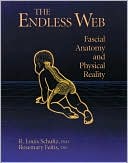Category Books
- Fiction Books & Literature
- Graphic Novels
- Horror
- Mystery & Crime
- Poetry
- Romance Books
- Science Fiction & Fantasy
- Thrillers
- Westerns
- Ages 0-2
- Ages 3-5
- Ages 6-8
- Ages 9-12
- Teens
- Children's Books
- African Americans
- Antiques & Collectibles
- Art, Architecture & Photography
- Bibles & Bible Studies
- Biography
- Business Books
- Christianity
- Computer Books & Technology Books
- Cookbooks, Food & Wine
- Crafts & Hobbies Books
- Education & Teaching
- Engineering
- Entertainment
- Foreign Languages
- Game Books
- Gay & Lesbian
- Health Books, Diet & Fitness Books
- History
- Home & Garden
- Humor Books
- Judaism & Judaica
- Law
- Medical Books
- New Age & Spirituality
- Nonfiction
- Parenting & Family
- Pets
- Philosophy
- Political Books & Current Events Books
- Psychology & Psychotherapy
- Reference
- Religion Books
- Science & Nature
- Self Improvement
- Sex & Relationships
- Social Sciences
- Sports & Adventure
- Study Guides & Test Prep
- Travel
- True Crime
- Weddings
- Women's Studies
Endless Web: Fascial Anatomy and Physical Reality »

Authors: Rosemary Feitis, R. Louis Schultz, Diana Sallas (Illustrator), Ronald Thompson
ISBN-13: 9781556432286, ISBN-10: 1556432283
Format: Paperback
Publisher: North Atlantic Books
Date Published: November 1996
Edition: (Non-applicable)
Author Biography: Rosemary Feitis
R. Louis Schultz has been a Rolfer since 1973, and is currently on the Anatomy Faculty of the Rolf Institute in New York City. He has authored numerous scientific articles and is co-editor with Rosemary Feitis of Remembering Ida Rolf (North Atlantic Books, 1996).
Rosemary Feitis worked with Dr. Rolf on her groundbreaking book Rolfing, edited Rolfing and Physical Reality, and is co-editor of Remembering Ida Rolf. She practices Rolfing and homeopathy and lives in New York City.
Illustrator Diana Salles is senior artist at the Museum of Natural History, New York.
Photographer Ronald Thompson has been a Rolfer for twenty-five years and is a member of the Anatomy Faculty of the Rolf Institute.
Book Synopsis
The result of more than two decades of research and practice, The Endless Web presents in clear, readable language a comprehensive guide to understanding and working effectively with the myofascial system, the 'packing material' of the body. Myofascia is a flexible network of tissue that surrounds, cushions, and supports muscles, bones, and organs. It also acts as a riverbed containing the flow of interstitial fluid, and is a critical influence on the immune and hormonal systems. In daily life, this connective tissue is an underlying determinant of movement quality, modd, alertness, and general well-being. The Endless Web is a fully illustrated guide to understanding how myofascia works, it supportive role within the body's anatomy, and how gentle manipulation of the myofascial tissue is central to lasting therapeutic intervention and how it can be integrated into any bodywork practice.
Table of Contents
| Introduction | ||
| 1 | Embryology: Introduction to Connective Tissue | 3 |
| 2 | Early Embryological Development | 6 |
| 3 | Factors in the Growth of the Embryo | 11 |
| 4 | Development of Mesodermal Tissues | 13 |
| 5 | Embryonic Limitations and Early Structural Organization | 15 |
| 6 | The Effect of the Birth Process | 21 |
| 7 | Developmental Transitions in the Newborn and Young Child | 23 |
| 8 | Myofascial Structures: The Spine as an Example of "Living Anatomy" | 27 |
| 9 | Movement and Gravity | 34 |
| 10 | Body Contour | 40 |
| 11 | Emotions and the Fascial Web: Body Awareness and Response Patterns | 46 |
| 12 | The Chest Band: Implications for Movement and Behavior | 53 |
| 13 | The Inguinal Band and the Structure and Function of the Vertebral Column in Relation to the Bands | 61 |
| 14 | The Eye Band and Chin Band | 68 |
| 15 | The Collar Band, Umbilical Band, and Groin Band | 73 |
| 16 | Proprioception: Internal Body Awareness | 83 |
| 17 | Upper Body | 85 |
| 18 | Axial Skeleton | 93 |
| 19 | Pelvis and Upper Legs | 98 |
| 20 | The System of Horizontal and Vertical Myofascial Structures | 106 |
| 21 | Reciprocity of Movement | 109 |
| 22 | Joints | 114 |
| 23 | Doing Bodywork Based on the Connective Tissue Concept | 119 |
| Illustration Index | 127 | |
| Subject Index | 129 | |
| About the Authors | 131 |
Subjects
 Alternative Medicine & Natural Healing
Alternative Medicine & Natural Healing  Massage & Reflexology
Massage & ReflexologyMedical Books
 Health-Related Professions
Health-Related Professions  Chiropractic
ChiropracticMedical Books
 Medicine
Medicine  Basic Sciences
Basic SciencesMedical Books
 Medicine
Medicine  Clinical Medicine
Clinical MedicineNonfiction
 Medicine
Medicine  Health-Related Professions
Health-Related ProfessionsNonfiction
 Medicine
Medicine  Medicine
Medicine
